Many people know that male wild turkeys, often called toms, or gobblers,
grow beards.
·
A male turkey grows a
cluster of long, hair like feathers from the center of its chest. This cluster
is known as the turkey's beard.
·
On adult males, these
beards average about 9 inches long.
·
10 to 20 percent of
hens also grow beards.
·
The longest beard on
record is more than 18 inches long.
What is not so commonly known is
that hens occasionally grow them too.
For the past week or so I have been photographing a bearded hen. Below are a couple of photos that show the
pencil thin beard clearly…
This bearded hen seems to be the dominant bird and can be seen here chasing
a non-bearded hen first one way, and then another, and finally giving her a
flogging for good measure...
Here are a few photos of gobblers with
their beards clearly visible...
Here is a gobbler, hen and poult (young of the year)...
For more
information about wild turkeys visit the National Wild Turkey Federation web
site…

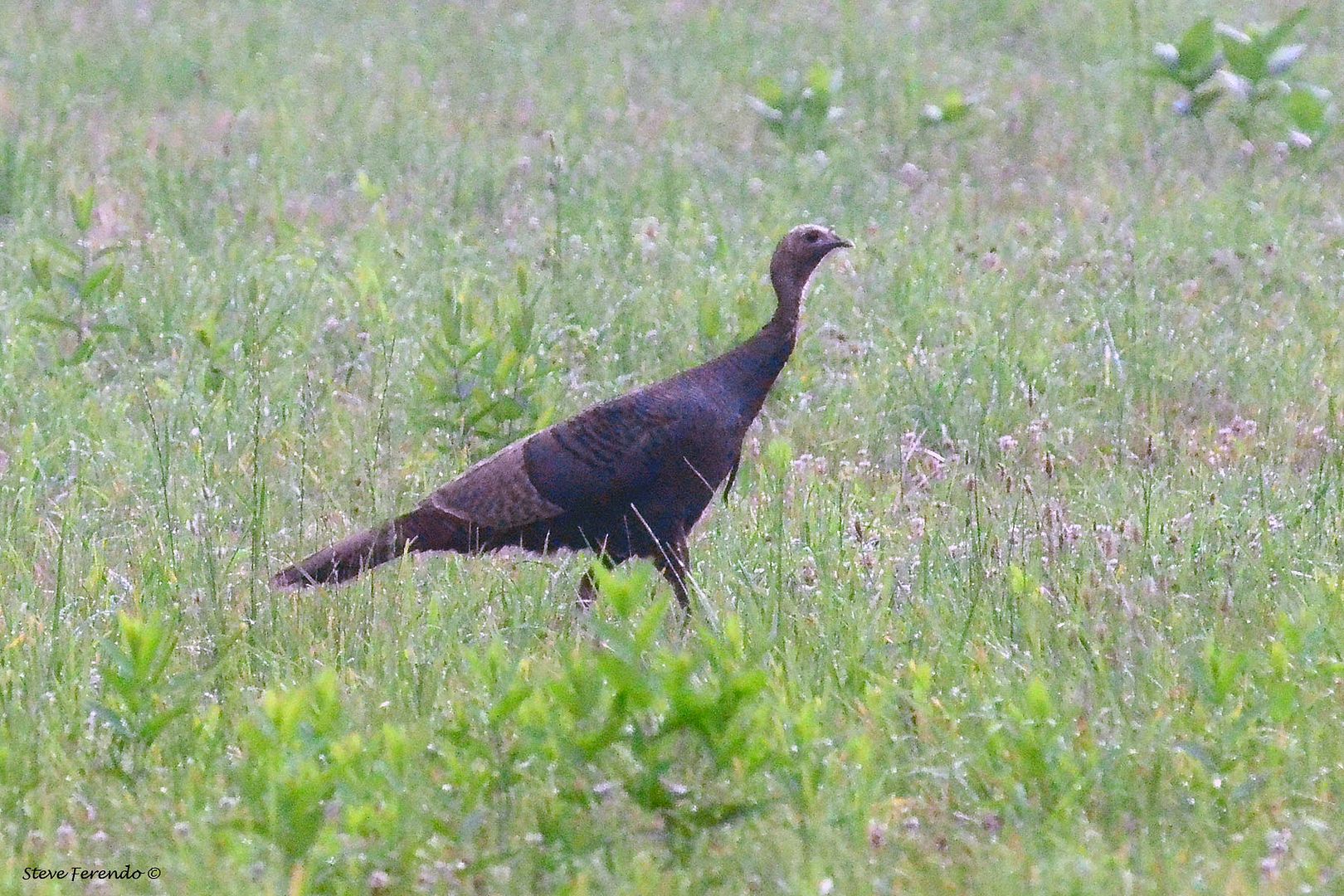
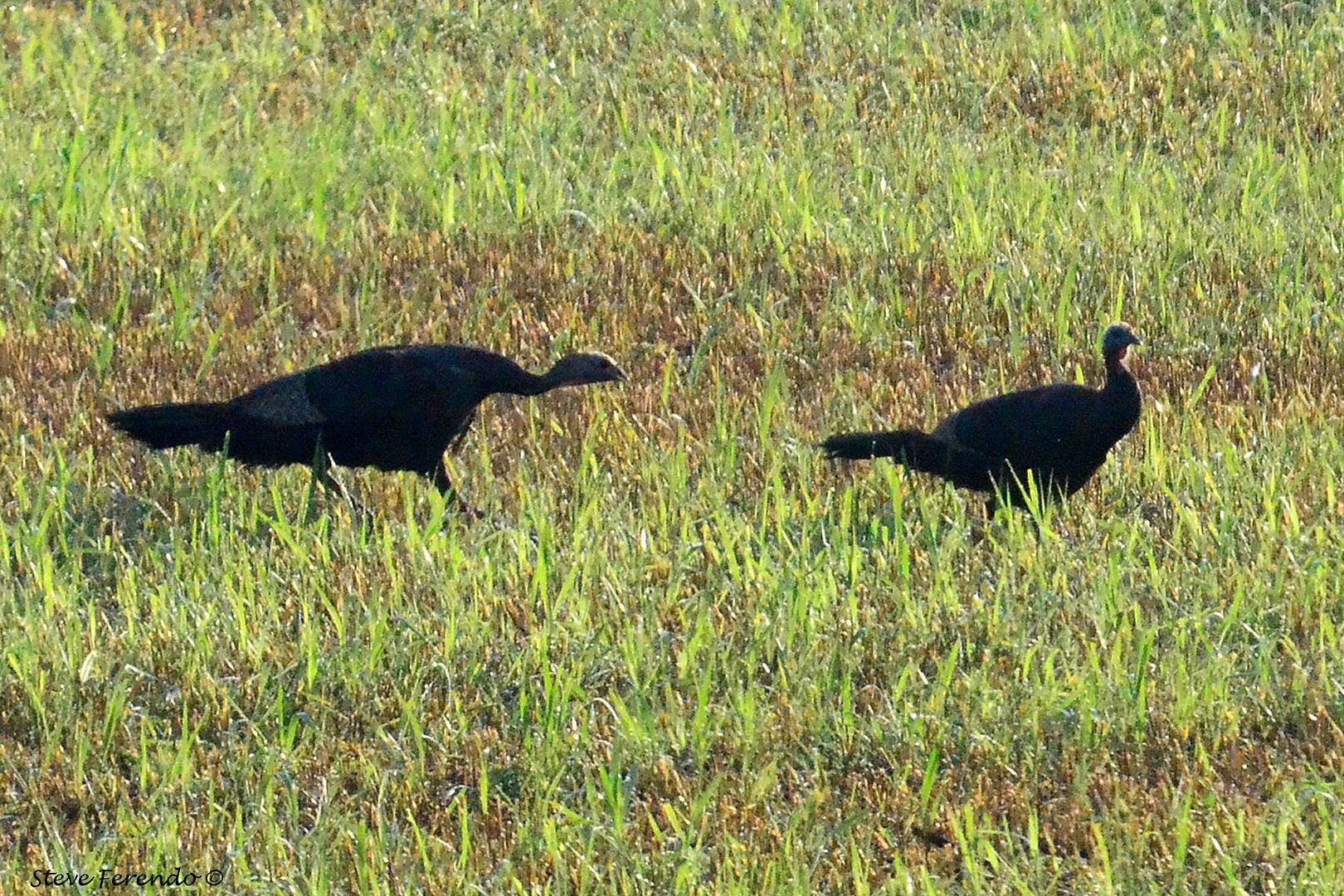

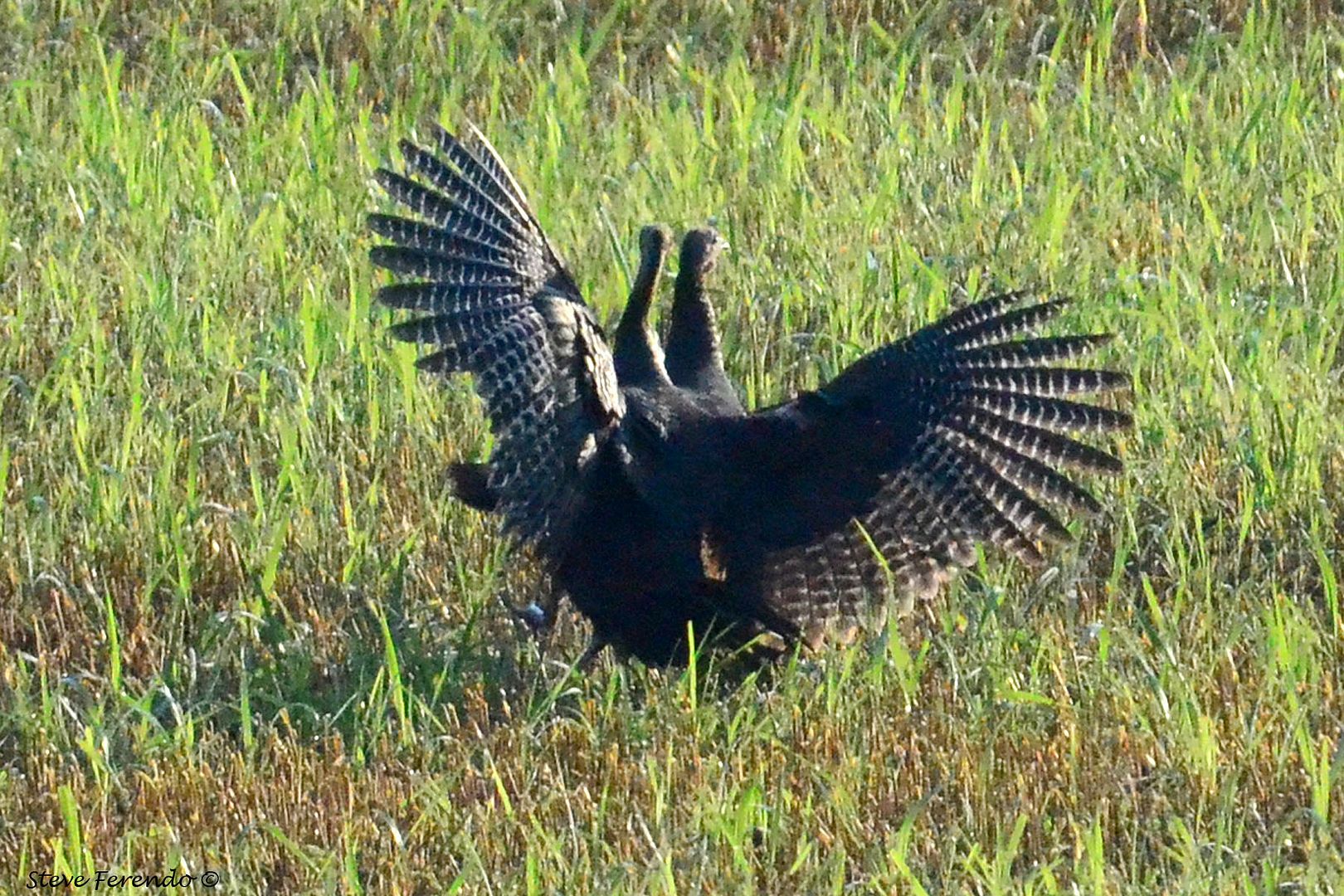
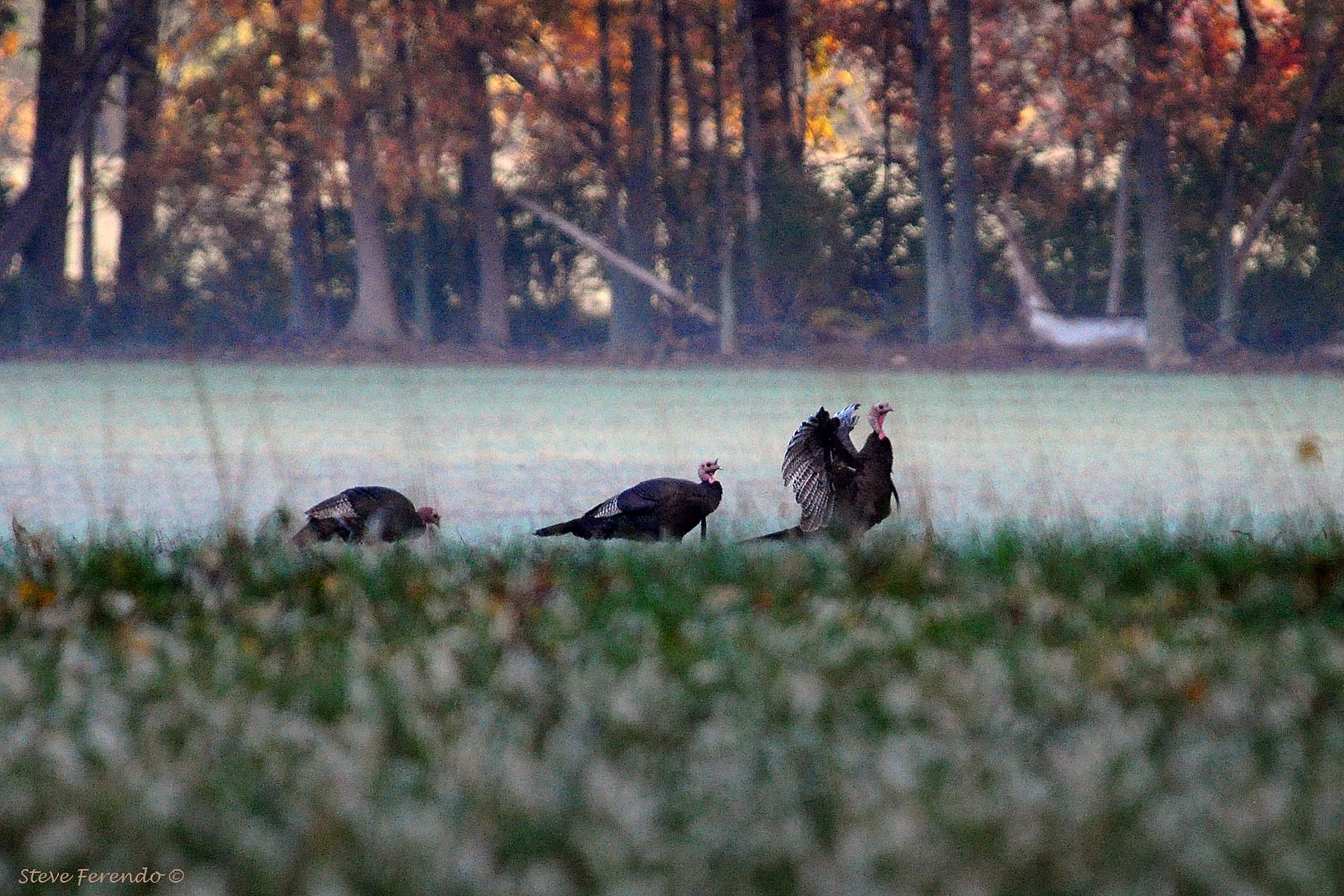
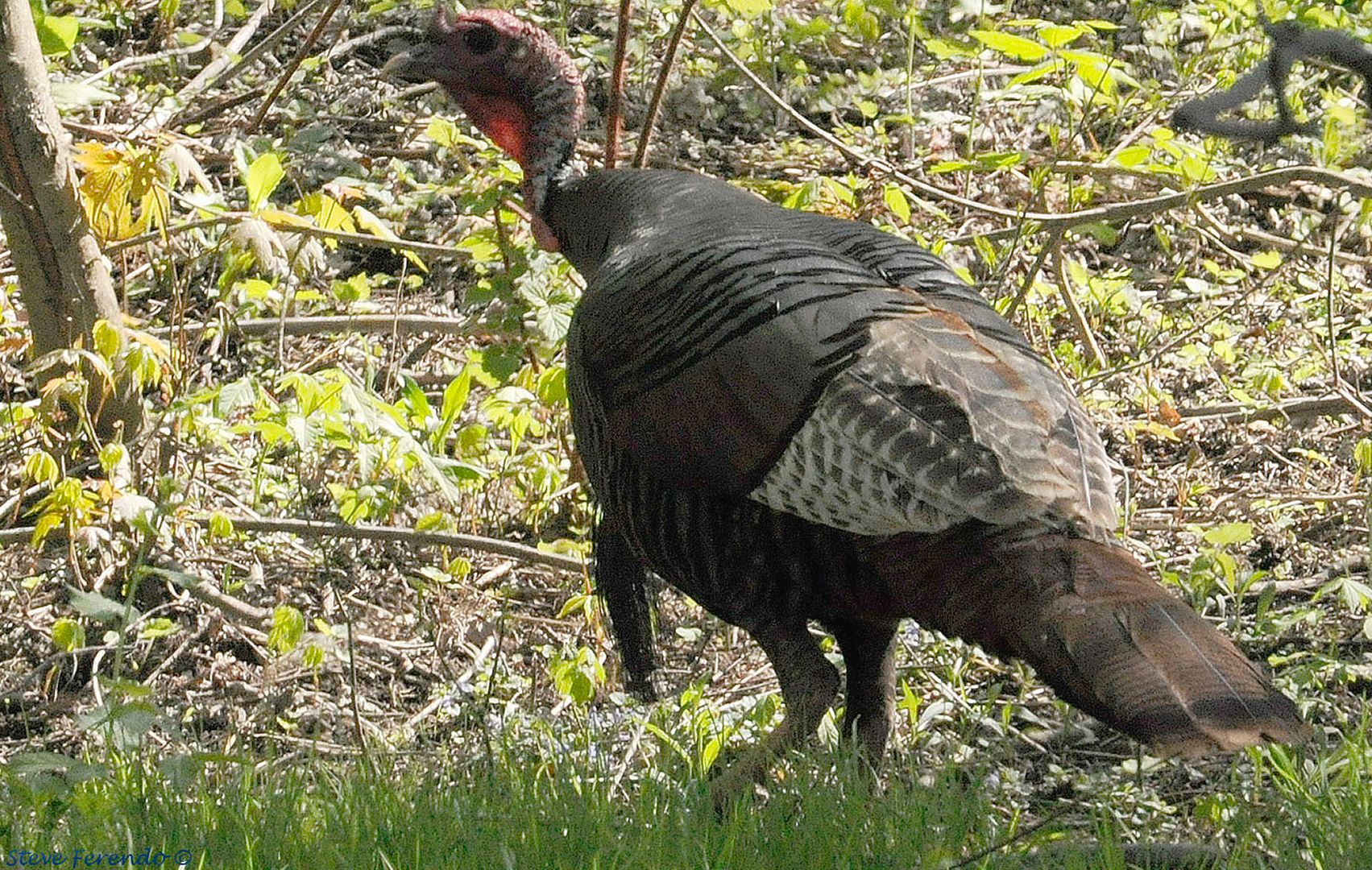
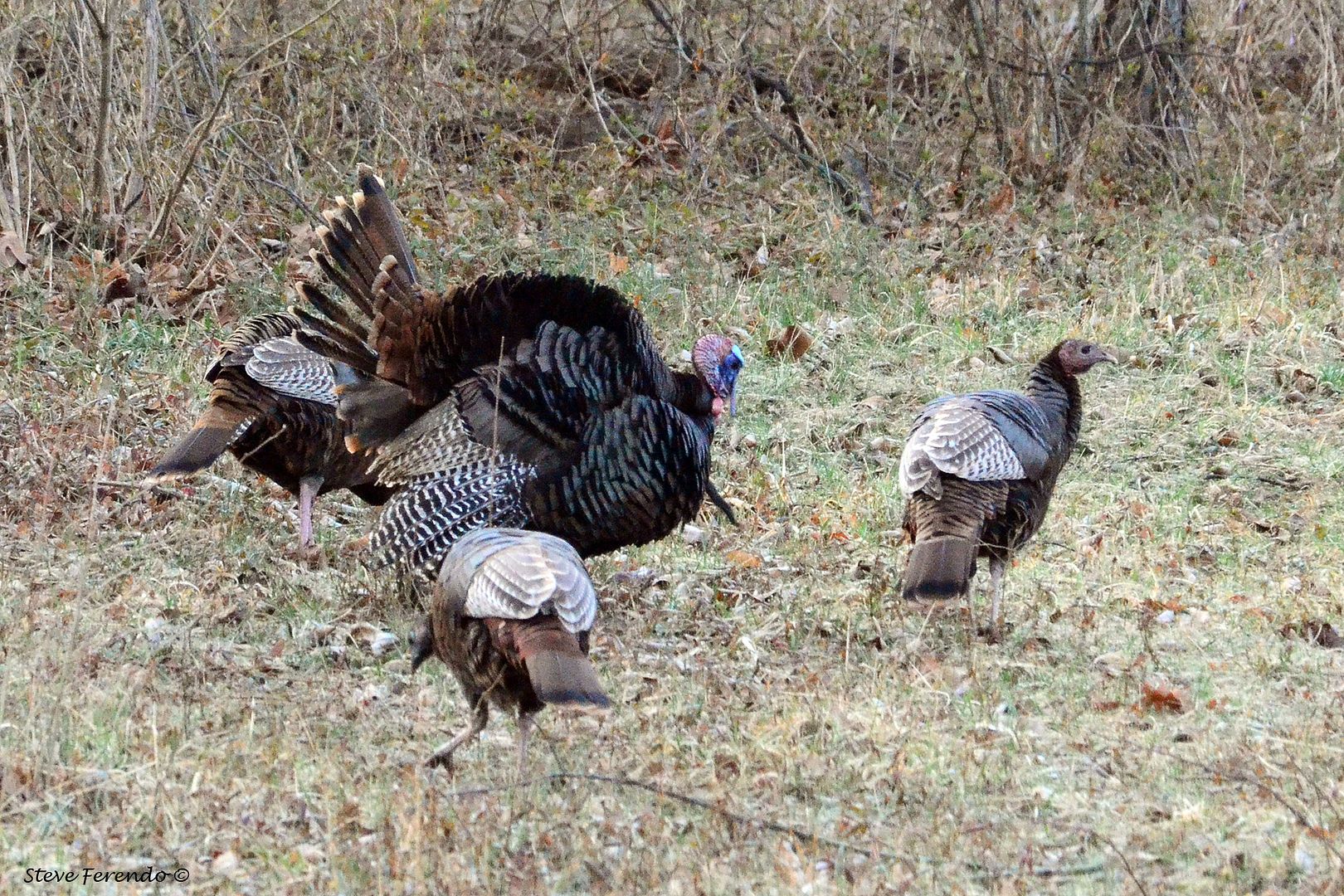
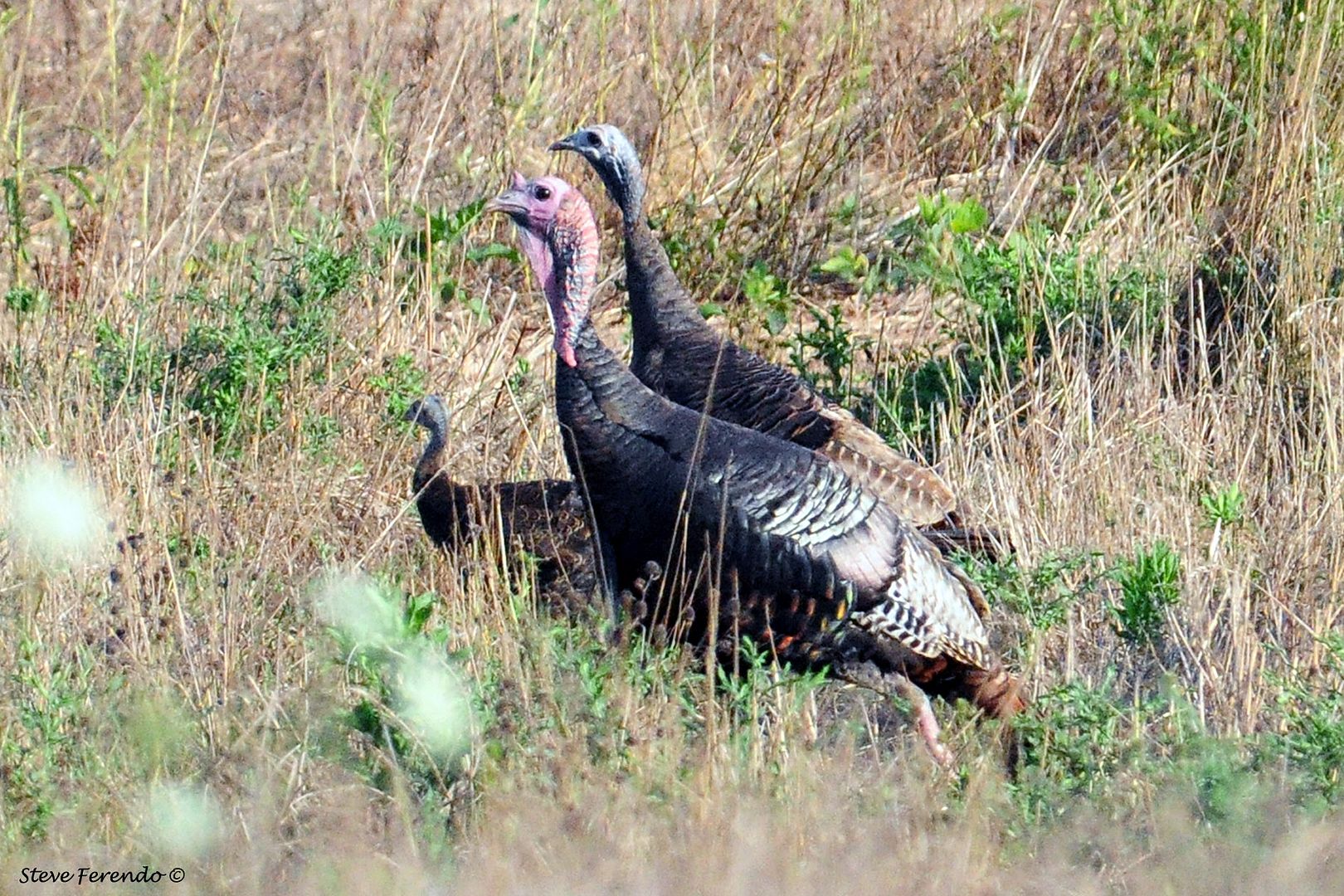
No comments:
Post a Comment
I sincerely enjoy comments from my visitors. I must ask that those wishing to comment understand that moderation has become necessary due to the nature of some comments left in the past...